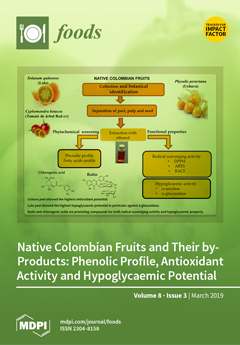This study compares the prevention effects of Shuidouchi with different fermentation times on constipation in mice. Shuidouchi is a short-time fermented soybean product. By improving its processing technology, it can incur better biological activity and become a health food. The Shuidouchi-treated mice were evaluated using constipation-related kits, quantitative polymerase chain reaction (qPCR), and Western blot assays. After the mice were fed 72-h-fermented Shuidouchi (72-SDC) for 9 d, the defecation time to excrete the first black stool was lower than that of the control and 24-SDC and 48-SDC groups, but was much higher than that of the normal group. The gastrointestinal (GI) transit of the small intestine of the 72-SDC group was higher than that of the control and the 24-SDC and 48-SDC groups, but lower that of the normal group. Meanwhile, 72-SDC could significantly increase the levels of
ghrelin, endothelin-1 (ET-1), vasoactive intestinal peptide (VIP), and acetylcholinesterase (AchE) in the serum of constipated mice compared to the levels in mice in the control group. Moreover, 72-SDC could raise
c-Kit, stem cell factor (
SCF), glial cell-derived neurotrophic factor (
GNDF), neuronal nitric oxide synthase (
nNOS), and endothelial nitric oxide synthase (
eNOS) messenger RNA (mRNA) and protein expression levels, and reduce transient receptor potential cation channel subfamily V member 1 (
TRPV1) and inducible nitric oxide synthase (
iNOS) expression levels in small-intestinal tissue compared to the levels in the control group. Meanwhile, 72-SDC also raised
ghrelin mRNA expression in gastric tissue and transient receptor potential ankyrin 1 (
TRPA1) mRNA expression in colon tissue compared to the control group mice; these effects were stronger than those of 24-SDC and 48-SDC. Shuidouchi has good preventative effects on constipation and performs best when fermented for at least 72 h.
Full article






